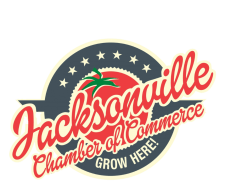What Welcoming Looks Like in a Small Business
Creating a truly welcoming business isn’t just about warm smiles or great lighting — it’s about removing barriers, seen and unseen, that keep people from feeling like they belong. Whether someone’s walking in for the first time or visiting your website from across town, they’re sensing everything: signage, tone, flow, and unspoken rules. When the world already gives them enough reasons to brace for awkwardness, your space can offer the opposite — a place that softens the edges. That doesn’t take perfection. It takes care. The kind of care that starts with noticing.
Use Signs That Speak to More Than One Audience
People notice when you’ve thought about them before they walk in. It shows up in the words on your door, the languages you use, and the cues you give off about who belongs here. Something as simple as translating “Welcome” or “Restrooms” into the most commonly spoken local languages does more than add clarity — it says, “We see you.” And that matters. One study showed how multilingual signage shows your respect not just for the person reading it, but for the community they come from. Bilingual and trilingual signs aren’t just for international airports — they’re a gesture of local hospitality, especially in areas with immigrant populations or second-language speakers. Even small efforts count. What’s on your front door sets the tone for everything that follows.
Translate What Matters — Especially the Sounds
Video is everywhere now — in onboarding materials, social posts, product demos — and much of it is silent by default. But for millions of customers, sound isn’t optional; it’s how they access meaning. That’s why translating audio into multiple languages isn’t just a marketing flex, it’s a welcome mat. With an audio translating tool, you can expand who gets to understand your story — not just visually, but audibly. Especially in training videos, product explainers, or customer support material, offering multi-language voiceovers removes one more obstacle for those who need it. Because welcoming doesn’t just look right — it sounds right too.
Stop Making Restroom Decisions Political — Just Make Them Kind
Restroom policies are one of the most immediate and emotional signals of inclusion in a physical space. The moment someone feels like they have to choose between discomfort and confrontation, you’ve already lost them. That’s why a single-stall all-gender restroom policy isn’t a political stance — it’s a pragmatic one. It gives privacy, flexibility, and removes guesswork for trans, nonbinary, disabled, and even family customers. You’re not making a social statement; you’re eliminating friction. And if you have multiple stalls, signage matters more than you think. Clarity, not cleverness, wins here. What does your bathroom situation communicate to someone scanning the space for safety?
Don’t Let Your Website Whisper, “This Isn’t for You”
Your website is often your real front door. And if it’s hard to navigate, impossible to read with a screen reader, or frustrating on a mobile device, people won’t push through — they’ll just bounce. Accessibility isn’t a checklist here either; it’s a mindset. Start with the basics: color contrast, alt text for images, logical tab order, and clear structure. From there, think about whether the user experience invites or excludes. Tools like screen readers or keyboard-only navigation need to work without friction.
Train Your Team Like It’s Core, Not Extra
Inclusivity isn’t just about the structure — it’s in the script. The way your staff handles mispronounced names, accessibility requests, or even awkward customer moments says more than your brand mission ever will. That’s why training can’t be just about point-of-sale systems or refund policies. It needs to cover customer diversity, bias interruption, and cultural awareness. Not in a preachy, corporate tone — but in clear, actionable ways your team can use on the floor.
Make Inclusion Part of How You Grow, Not Just a Fix
Being welcoming isn’t a one-time campaign. It’s a rhythm. That means you revisit policies, update signs, retrain staff, and listen to the moments where someone quietly felt like they didn’t belong — then fix them. It means asking better questions on customer feedback forms. It means giving yourself permission to learn, adjust, and invite critique. Ultimately, it’s about building systems that don’t just tolerate difference but seek it out. The more your business reflects the community around it, the more resilient and trustworthy it becomes. If you want to cultivate a culture of inclusivity, make it visible in your everyday operations — not just your values statement.
Welcoming isn’t a style. It’s a strategy — and a promise. It shows up in what you say and how you say it. In what you build and what you ignore. Every barrier you remove adds an invitation. Every choice you make echoes outward. So don’t wait for someone to tell you what made them feel unwelcome. Start making changes before they have to. That’s what turns a business into a place where people want to stay.

